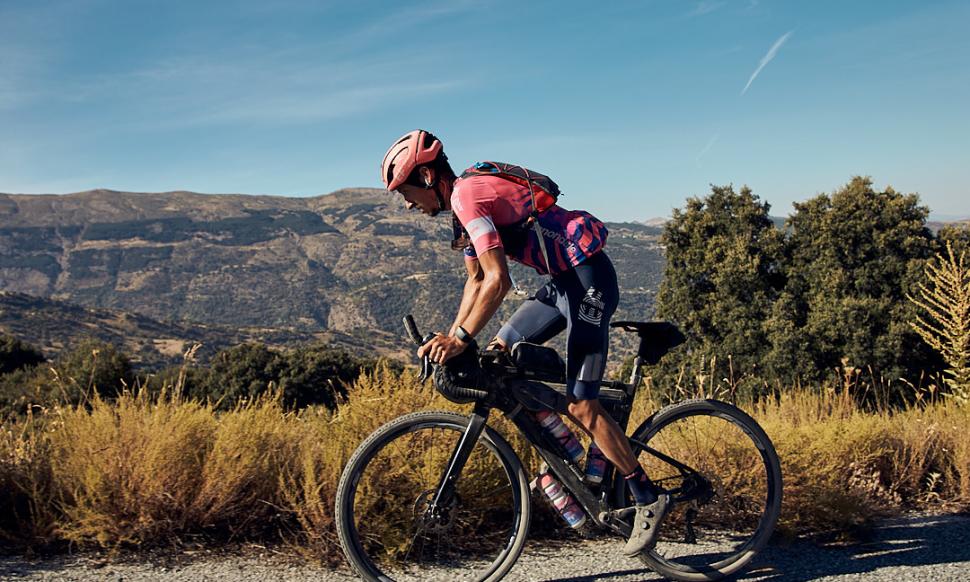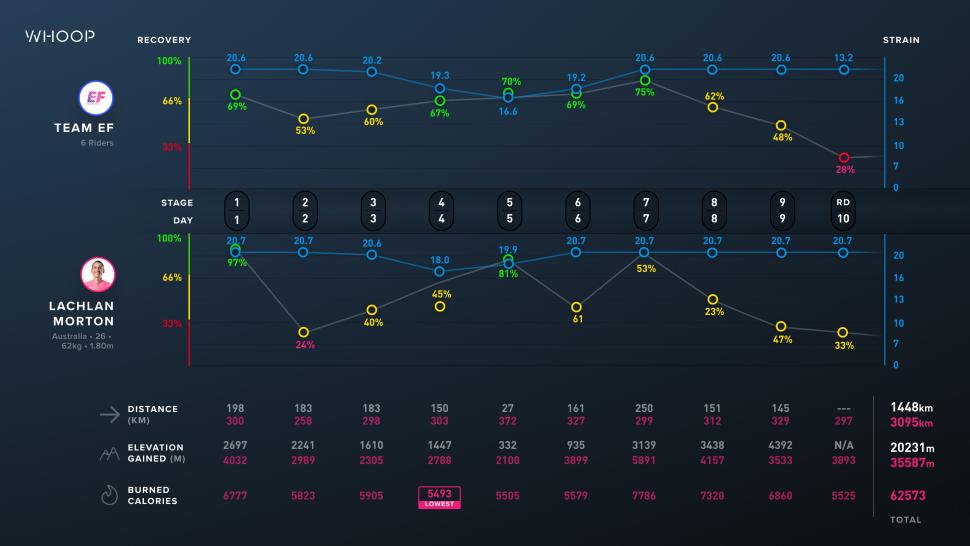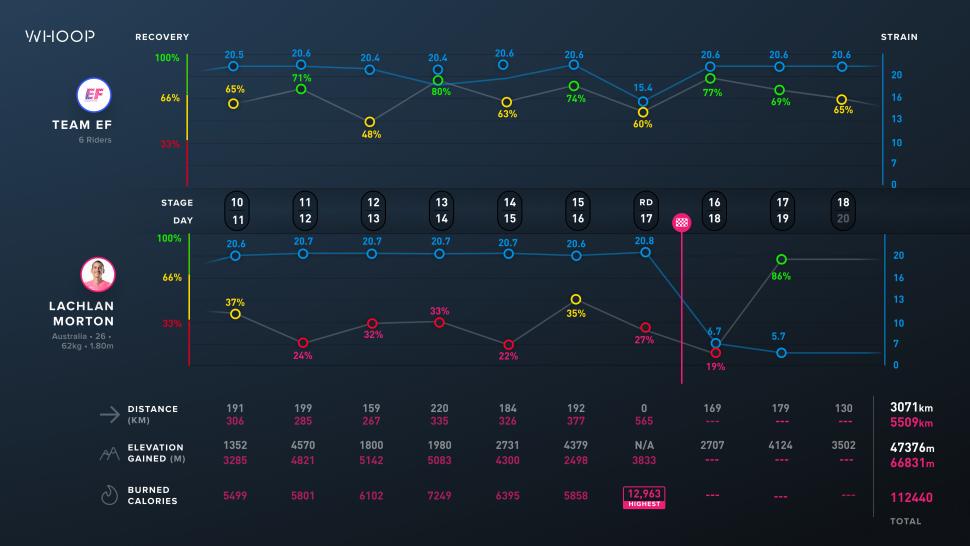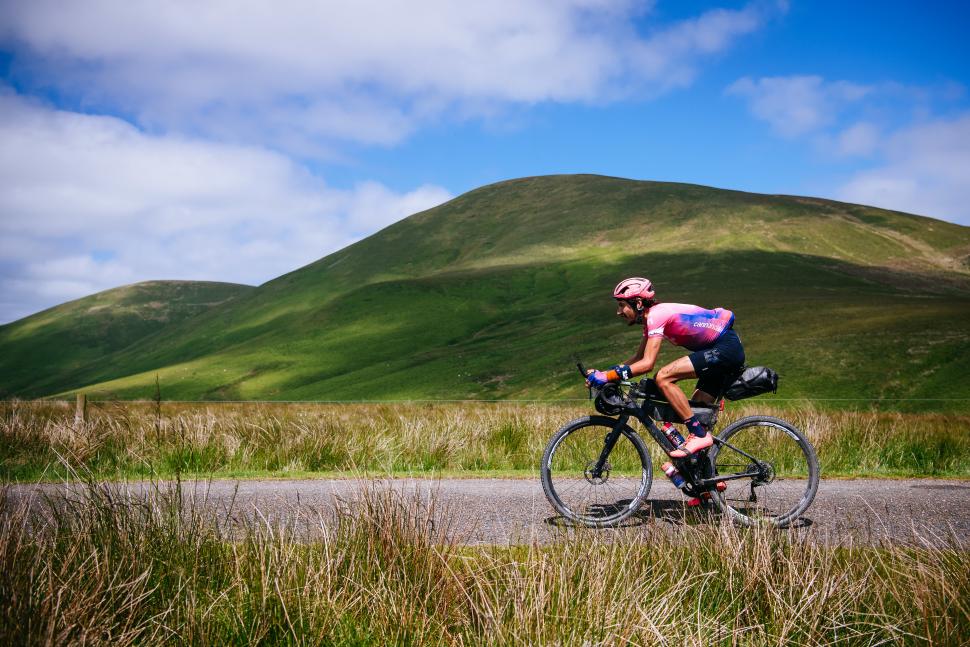- News
- Reviews
- Bikes
- Accessories
- Accessories - misc
- Computer mounts
- Bags
- Bar ends
- Bike bags & cases
- Bottle cages
- Bottles
- Cameras
- Car racks
- Child seats
- Computers
- Glasses
- GPS units
- Helmets
- Lights - front
- Lights - rear
- Lights - sets
- Locks
- Mirrors
- Mudguards
- Racks
- Pumps & CO2 inflators
- Puncture kits
- Reflectives
- Smart watches
- Stands and racks
- Trailers
- Clothing
- Components
- Bar tape & grips
- Bottom brackets
- Brake & gear cables
- Brake & STI levers
- Brake pads & spares
- Brakes
- Cassettes & freewheels
- Chains
- Chainsets & chainrings
- Derailleurs - front
- Derailleurs - rear
- Forks
- Gear levers & shifters
- Groupsets
- Handlebars & extensions
- Headsets
- Hubs
- Inner tubes
- Pedals
- Quick releases & skewers
- Saddles
- Seatposts
- Stems
- Wheels
- Tyres
- Health, fitness and nutrition
- Tools and workshop
- Miscellaneous
- Buyers Guides
- Features
- Forum
- Recommends
- Podcast
 Lachlan Morton - Photo Credit Grubers 06
Lachlan Morton - Photo Credit Grubers 06Data reveals huge strain of Lachlan Morton’s solo Alt Tour vs. EF-Education Nippo’s Tour de France efforts
Lachlan Morton of EF-Education Nippo rode solo fully unsupported ahead of the Tour de France this year and beat the peloton to the Champs-Élysées by about six days, completing his Alt Tour challenge on 13 July after 17 days of riding - now the team's fitness tracking partner Whoop has released his data to show the full extents of the monster effort.
The EF Education-Nippo team has partnered with the fitness and health tracker Whoop for monitoring sleep, strain and recovery. Looking at the data collected you can see how Lachlan’s body coped with the strain it was under as well as the intensity of his Alt Tour compared to the Tour de France the rest of the EF team were riding.
The two graphs below show the differences in the distance that Lachlan rode each day versus the EF team, as well as the total calories burnt.
Lachlan not only rode the length of the Tour de France stages, but also the distance of the transfers in between stages, bringing his distance up to 5,509km (compared to the EF team’s 3,071km) and elevation gain to 66,831m (vs. 47,376m). That’s almost 20,000 more metres of climbing than riders at the Tour itself.
He did his Alt Tour fully unsupported, meaning he didn’t have any team help, hotels and had to source his own food for his trek across France.
Lachlan’s bike also weighed around three times that of the riders of the Tour de France. He was on a 25 kilo Cannondale SuperSix EVO Hi-Mod bikepacking set up, climbing the slopes of Mount Ventoux and the Col du Tourmalet amongst many others.
Lachlan certainly pushed through on the last leg, burning 12,963 calories on day 17 across 564.54km, which was 20.5 hours of riding.
That day Lachlan hit 20.8 on Whoop’s strain scale that goes from zero up to 21. Whoop’s strain measures the total cardiovascular load experienced over a day and day 17 marks Lachlan’s highest peak. You don’t see 20.8 very often…
From day six onwards Lachlan was consistently pushing up to between 20.6 and 20.7 all the way to his final spike to the finish on day 17 with the 20.8 reading, while the EF team were hovering between 20.4 and 20.6 through this same window, apart from on day 10 and 17 aka rest days, with a lower strain of 13.2 and 15.4 were recorded.
> You can find out what riders get up to on rest days during Grand Tours over here.
This continuous high daily strain began to take its toll on Lachlan - above you can see again on the second graph that he wasn’t getting enough recovery. According to Whoop, 34% to 66% is needed for adequate recovery, and to calculate this figure the fitness tracking brand averages the previous average historical data against what it's measuring each day.
Lachlan dips below the green and yellow, and into the red zone from days 12 to 15, as well as the final day; his average sleep time of just five to six hours during the 18 days could go some way towards explaining this.
> How to maximise your recovery and build your fitness
Looking at the graph below, you can see Lachlan's Heart Rate Variability (HRV) started a downward trend compared to his normal resting heart rate, normal respiratory rate, HRV etc.
His highest HRV before the Tour started was 147 but when he finished it was just a third of that at 52.
Whoop explains on its site: “Your autonomic nervous system, which controls the involuntary aspects of your physiology, has two branches, parasympathetic (deactivating) and sympathetic (activating).
“The parasympathetic branch (often referred to as “rest and digest”) handles inputs from internal organs, like digestion or your fingernails and hair growing. It causes a decrease in heart rate.
“The sympathetic branch (often called “fight or flight”) reflects responses to things like stress and exercise, and increases your heart rate.
“If you have low heart rate variability, one branch is dominating (usually the sympathetic) and sending stronger signals to your heart than the other.”
His resting heart rate was at 38 when he started this challenge, and after he rode the entire Alt Tour Lachlan’s resting HR went up to 59.
“His body was working overtime to repair the damage it took on over the Alt Tour,” explains Whoop.
On Lachlan’s second day of rest after he completed his solo adventure across France, he finally scored some green recovery, with his highest recovery percentage of 86% with a resting heart rate of 50 and HRV of 124.
“This shows that his body getting on top of the demands he put himself through over the 18 days,” Whoop says.
Would you like these insights for your own riding? We’ve got a Whoop 3.0 strap in for testing and will be letting you know soon how we got on tracking and responding to these metrics.
Lead photo: Gruber Images
Anna has been hooked on bikes ever since her youthful beginnings at Hillingdon Cycle Circuit. As an avid road and track racer, she reached the heady heights of a ProCyclingStats profile before leaving for university. Having now completed an MA in Multimedia Journalism, she’s hoping to add some (more successful) results. Although her greatest wish is for the broader acceptance of wearing funky cycling socks over the top of leg warmers.
Latest Comments
- Steve K 22 min 6 sec ago
Drive through steak house?...
- slc 1 hour 10 min ago
TBH the west (Barton Hill) part of the scheme looks like a much larger change than the east (Beaufort Rd) part. Some drivers living in the west...
- Rendel Harris 46 min 56 sec ago
If you bothered looking at the link you would see that it is not one of their reflective jackets, it is fluorescent with only a small number of...
- Owd Big 'Ead 7 hours 55 min ago
You need to get out of Derby then. Go somewhere else, because while not perfect, Derby is streets ahead of the vast majority of places I've lived...
- HoarseMann 10 hours 10 min ago
Driver injured after car flips onto its roof https://www.bbc.co.uk/news/articles/cy0g9rpp8x9o
- mark1a 10 hours 28 min ago
I don't think he wants to talk about it...
- Rendel Harris 10 hours 57 min ago
Ach, dinnae fret...
- Matt Page 11 hours 5 min ago
The Prevelo Alpha Three on the main feature image is 20".
- eburtthebike 11 hours 17 min ago
£100 bonus.
- chrisonabike 11 hours 25 min ago
To be fair if this is our usual revenant they've got form in rewriting history...





Add new comment
1 comments
Interesting reading.
I wonder what these kind of endevours might have on his racing ability.. does it stunt his fast twitch and just turn him into more of a diesel, is he building himself into a Paris Roubaix winner or changing his physiology so much he'll be bidding farewell to the pro-peloton?